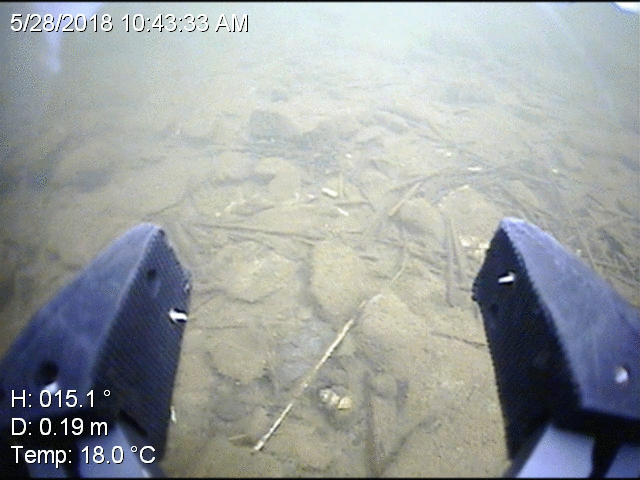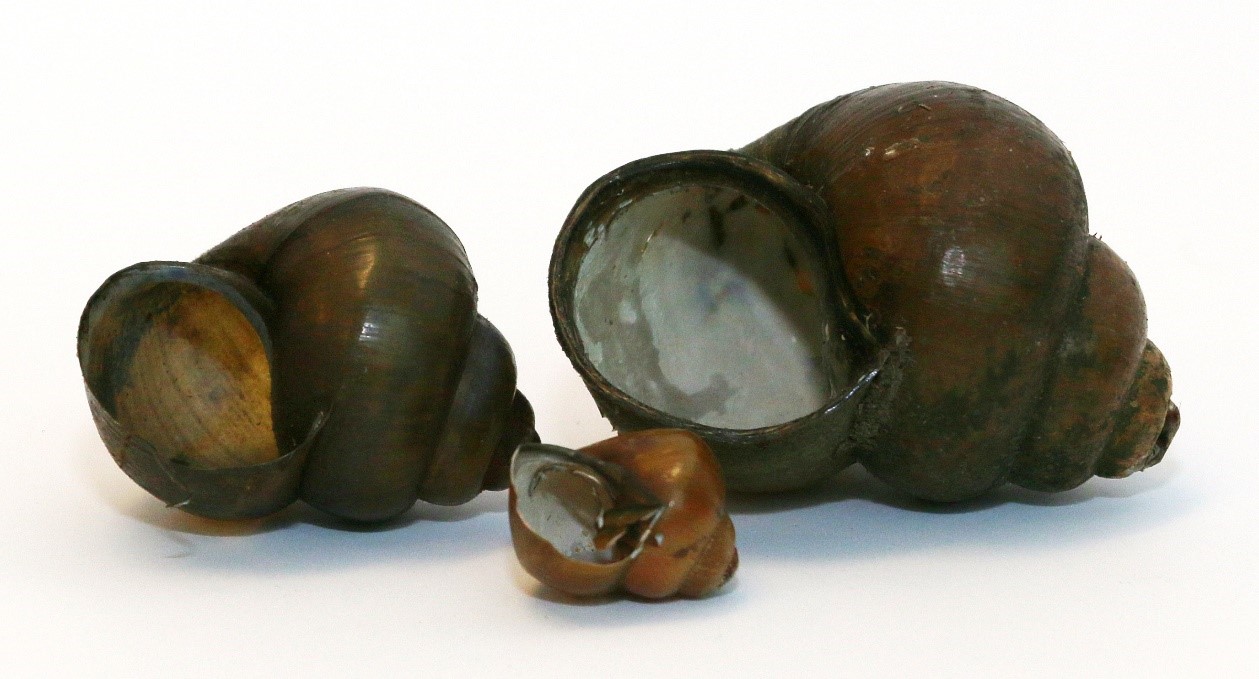Dynamic Environment & Ecosystem Health ResearchChinese mystery snails in Atlantic Canada. |
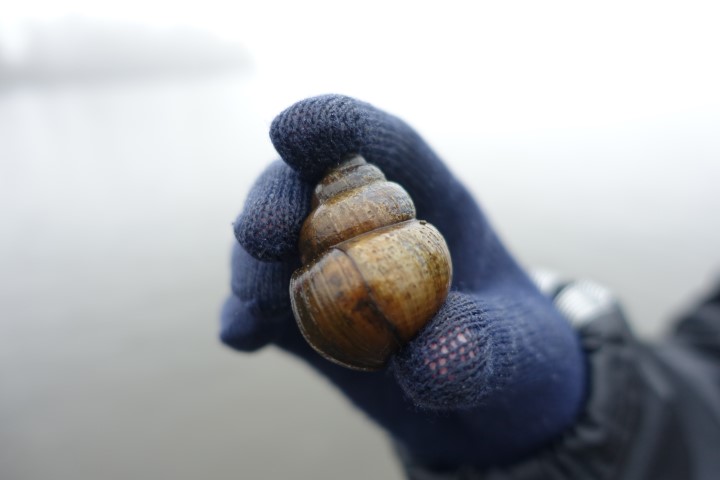 |
Home
People
Research
Historical gold mine tailings
- Ecology & biomonitoring
- Remediation
Invasive species
- Chinese mystery snails
- Chain pickerel
- Crayfish
Publications
Teaching
Resources & Links
Lab news
Media & updates
Directions
Are Chinese mystery snails a concern for the eastern Canada region?
If you think you may have found Chinese mystery snails, please let us know! Take a photograph & make a note of the location (lake name) and details, then contact DFO Maritimes Aquatic Invasive Species or report it via the iNaturalist app.
Many lakes and rivers in Nova Scotia, New Brunswick, Prince Edward Island and Newfoundland have been found to have Chinese mystery snails. To date, most work on aquatic invasive species only focused on sport fish species. However invasive aquatic invertebrates such as the Chinese mystery snails are also of concern. The Chinese mystery snails are an aquarium & food species native to east Asia which may be spreading through the Shubenacadie waterway system in Nova Scotia and the Saint John System in New Brunswick. Reports also have been made from Newfoundland and Prince Edward Island.
Chinese mystery snails, Cipangopaludina chinensis (synonyms: Bellamya chinensis, Paludina chinensis), have been recently discovered in Nova Scotia lakes and New Brunswick river systems at high numbers. Those are thought to be probable aquarium species released inappropriately into lakes. Those snails have been reported widely across the USA but are not as well studied in Canada.
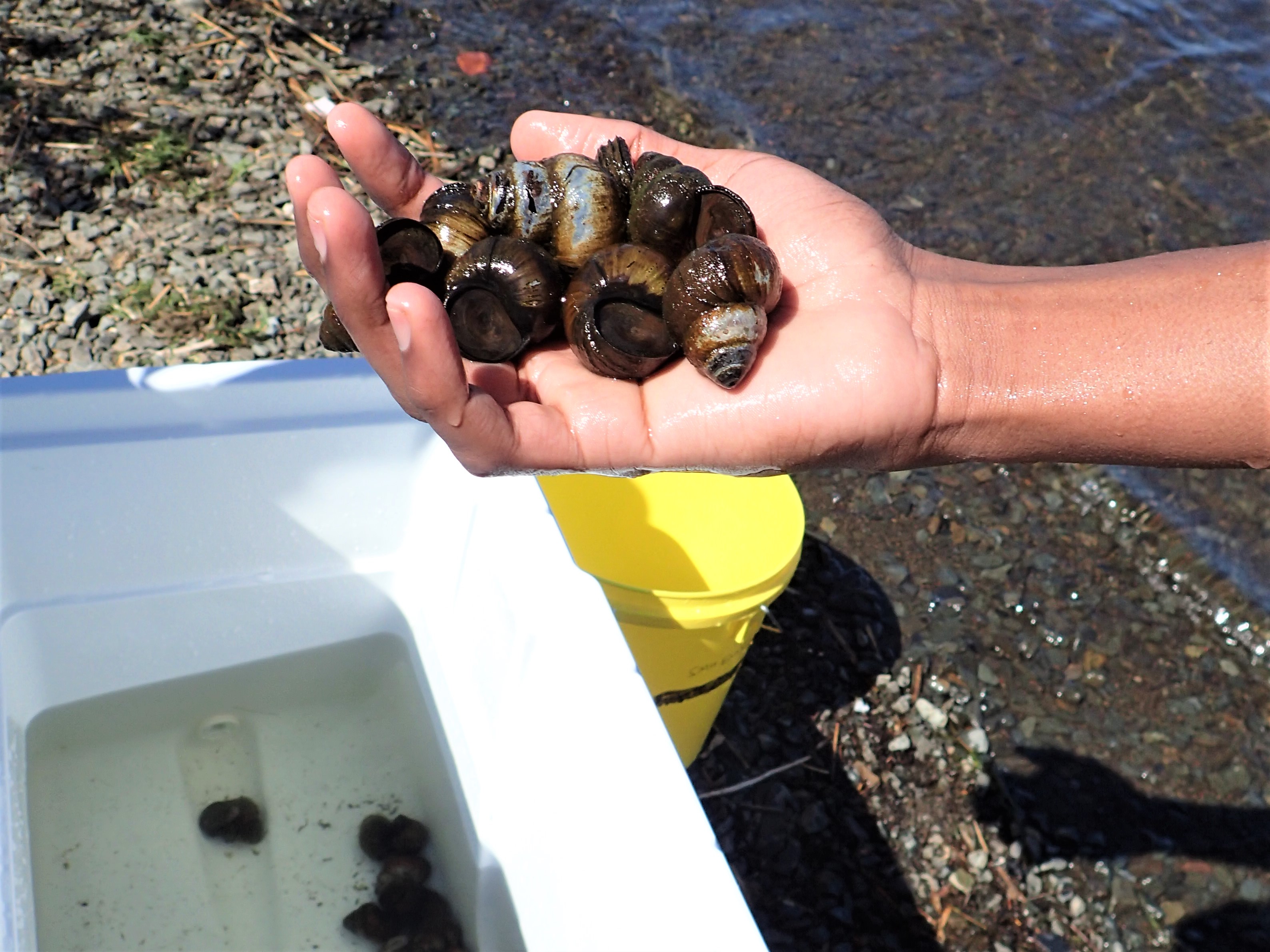
This snail species originates from the far east of Asia & Russia regions. Chinese mystery snails are a very hardy species which can tolerate a wide range of temperatures in freshwater ecosystems. Those snails have a "trapdoor" (operculum) covering their shell opening providing significant protection.
Chinese mystery snails have gills for underwater respiration and can survive extended periods in air. In addition, those snails are live-bearing (does not lay eggs), with female snails having the capacity to contain over 100 fertilized embryos for eventual development and release as juvenile snails.
There is concern that the Chinese mystery snails may be disrupting native mussel and snail populations, impacting fish feeding patterns and even shifting nutrient cycling in lakes which could encourage algal blooms.
We are collaborating with Department of Fisheries & Oceans, the New Brunswick Museum, Maritime Aboriginal Aquatic Resources Secretariate (MAARS), and other groups & colleagues to map out the distribution and impact of the Chinese mystery snails.
What are the impacts and ecology of the Chinese mystery snails?
As the Chinese mystery snails are lower-trophic species in freshwater ecosystems which have not evolved to incorporate those large snails in their food webs, we anticipate indirect and unexpected impacts. In other studies in the USA, Chinese mystery snails, in conjunction with other invasive species, have been implicated in algal blooms, reduction of native mollusk species and changing fish food web dynamics.
RESOURCES:
DEEHR Resources
- Sarah Kingsbury's 2019 International Conference on Aquatic Invasive Species poster (3rd place for best student poster!). Figshare link.
- Sarah Kingsbury's 2020 Society of Canadian Limnologist meeting poster on water quality databases. Figshare Link.
- Draft map showing probability of Chinese mystery snail establishment across Nova Scotia using a Random Forest Model approach. Figshare link.
- The Chinese Mystery Snail Project. Excerpted article by Sarah Kingsbury from the Mawqatmuti'kw magazine (Winter - Spring issue 10, 2019). PDF Link.
- SMU brochure about the Chinese mystery snails in eastern Canada. PDF Link.
- SMU ID Cards for adult Chinese mystery snails and juvenile Chinese mystery snails (PDF files)
- SE Kingsbury*, DF McAlpine, C Youji, E Parker & LM Campbell. 2020. A review of the non-indigenous Chinese Mystery Snail, Cipangopaludina chinensis (Viviparidae), in North America, with emphasis on occurrence in Canada and the potential impact on indigenous aquatic species. Environmental Reviews. 29(2): 182-200. Open Access. https://doi.org/10.1139/er-2020-0064.
- SE Kingsbury*, M Fong#, DF. McAlpine & LM Campbell. 2021.
Assessing the probable distribution of the potentially invasive
Chinese Mystery Snail, Cipangopaludina chinesis in
Nova Scotia using a random forest model approach. International
Conference on Aquatic Invasive Species special issue. Aquatic
Invasions. 16:1:167-185. https://doi.org/10.3391/ai.2021.16.1.11.
- M Fraser. 2020. Ecological thresholds of the Chinese mystery snail (Cipangopaludina chinensis) in relation to Nova Scotia environments. BSc Honours Thesis. SMU Library PDF link.
- SE Kingsbury 2020. Predicting the distribution of the Chinese mystery snail, Cipangopaludina chinensis, a potentially invasive non-indigenous species in Atlantic Canada. SMU Library PDF Link.
External resources
- Nova Scotia Invasive Species Council. Link.
- Alien species in Nova Scotia. NS Government public communication document. Link.
- Vivipare chinoise au Quebec. Link. (en francais)
- NS Lake bythometry maps & water chemistry data. Link.
- USGS Map of Chinese mystery snails across the USA. Link.
- DF McAlpine et al. 2016. Occurrence of the Chinese mystery snail, Cipangopaludina chinesis (Gray, 1834) (Mollusca: Viviparidae) in the Saint John River system, New Brunswick with review of status in Atlantic Canada. BioInvasions Records 5(3):149-154. PDF Document.
- JB Burch. 1989. North American Freshwater Snails: Introduction, Systematics, Nomenclature, Identification, Morphology, Habitats & Distribution. Walkerana 2(6):1-80. Freshwater Mollusk Biology & Conservation Link. PDF download.
- DS Davis. 1985. Synopsis and distribution tables of land and freshwater mollusca of Nova Scotia. Nova Scotia Museum Curatorial Report No. 54. 33pp. PDF Link.
- KE Perez & G Sandland. Key to Wisconsin Freshwater Snails. Link. (with photos).
- SM Martin. 1999. Freshwater snails (Mollusca: Gastropoda) of Maine. Northeastern Naturalist 6(1):39-88. PDF Link.
MEDIA MENTIONS:
- Nova Scotia Law Amendments Committee Bill 116. CBC NS, Jean Laroche, March 25, 2019.
- Scientists ask for help to solve snail 'mystery'. CBC NB, May 17, 2019.
- Saint Mary's researcher looking for public help with Chinese mystery snail invasion. Chronicle Herald May 17, 2019.
- CBC Radio One interview by Moira Donovan with Sarah Kingsbury & Meghan Fraser at Loon Lake. Transcript July 2019.
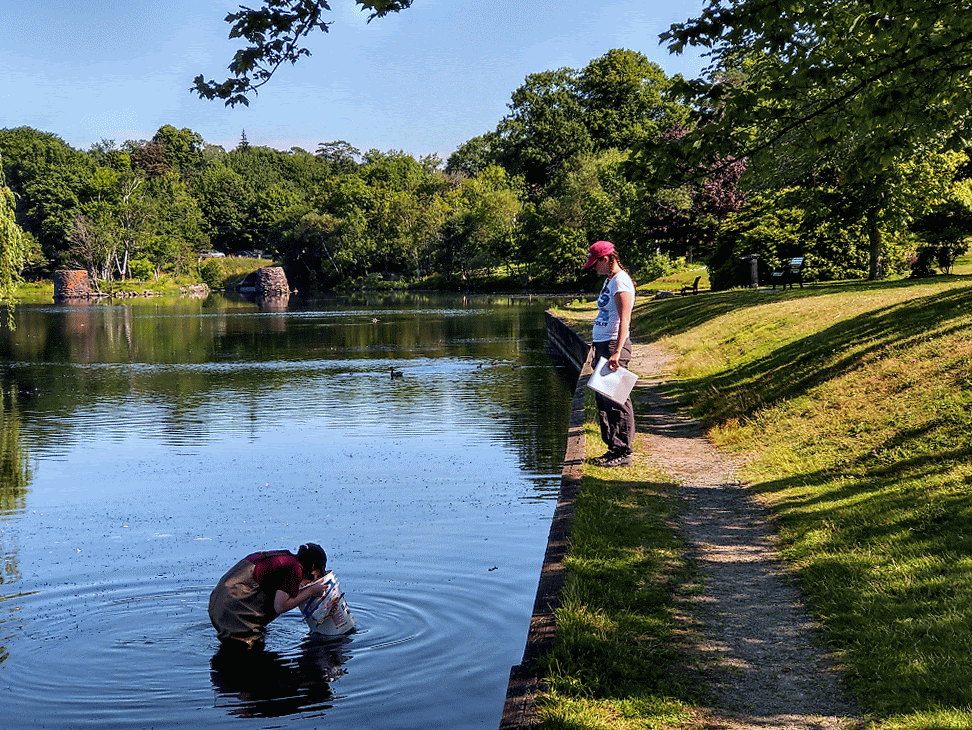
Headings
All images and content
copyright (c) Linda Campbell and other members of Dynamic
Environment & Ecosystem Health Research Group.
